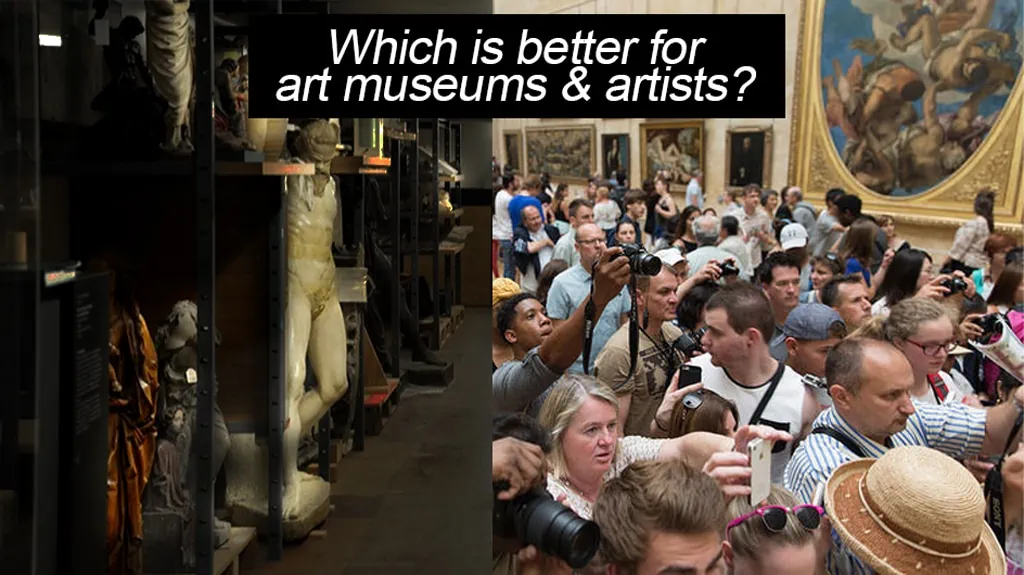
by Mark Oppenheim
Museums are experiencing a quiet, under-the-radar crisis. On the one hand, there are increasing cold-storage costs required to preserve sensitive collections that few ever see. On the other, young audiences seem more engaged by mobile devices and social media experiences than they are by conventional art museum exhibitions… with the consequence that the audience for art museums has diminished over the last two decades. Works in cold storage are seen not at all, and even exhibited works are seen by fewer people.
A recent New York Times article discusses the costs of hiding art in warehouses – it’s a fantastic overview of a complex problem. NYT reporter Robin Pogrebin has done a real service, and she is not alone in seeing the problem. Alice Walton is in the process of creating a new operating foundation Art Bridges (we’re currently undertaking their CEO search), with the aim of changing the dynamic surrounding important works of American art that never see the light of day. Art Bridges will democratize access to art, and collaborate with collectors, museums, curators and others across America to create truly engaging exhibition experiences for all Americans regardless of whether they live close to a major museum in big cities. We’re also working on some groundbreaking searches on the art experiences front. Of particular interest is a search underway for the Peabody Essex Museum, which is examining how to create addictive exhibition experiences by looking at neuro-chemical reactions as visitors absorb in-gallery and online art experiences. It’s about addictive design within an art museum context. Our work with clients can function as a kind of master class on the sector’s leading edge delivered by its thought leaders. Not a bad way to spend a day.
Pogrebin’s NYT article points out that major collecting museums only allow public access to 1 to 2 percent of their full art collection. Costs of storage are undermining the financial strength of these museums, and diverting funds away from programming that makes institutions relevant to visitors. De-accessioning (the term for redistributing objects to other collections and collectors) can be bureaucratic, costly and politically fraught. Walton’s Art Bridges is arguably the most significant among many efforts to change the rules of the game, and they are joined by organizations like the Indianapolis Museum of Art at Newfields, New York’s MOMA and other museums and museum directors, some of which are referenced in the article. Each of these leaders have taken on the challenge of how to redeploy and use otherwise unseen stored art to strengthen the ecosystem for art museums and the museum visitor experience. Embedded within such solutions are also strategies for museum brand extension, art experience design, art and art history education, civic engagement and audience diversification.
The future for art museums, and for creators of art, lies in engaging the audience. That audience is us. Art that never sees daylight serves little purpose, other than as an archive of object viewable by only a few specialists. And how many artists create works for archiving? We honor the artist’s intent by making works available to the public, and the curator’s craft by transforming their knowledge into engaging experiences.
It’s time for the art and museum world to embrace certain changes advanced by the sector’s thought leaders. If this leads to crowded museums and high demand for art experiences… well, that’s a quality problem to have. We can find leaders to solve that!
Mark Oppenheim is an unrepentant nonprofit wonk who runs nonprofit search and media organizations. Click to learn more about m/Oppenheim Executive Search and our Nonprofit News Initiative.
mOp-Ed pieces reflect diverse opinions about the nonprofit world and we welcome yours. If you would like to be a guest writer for mOppenheimTV, please contact us for more information
